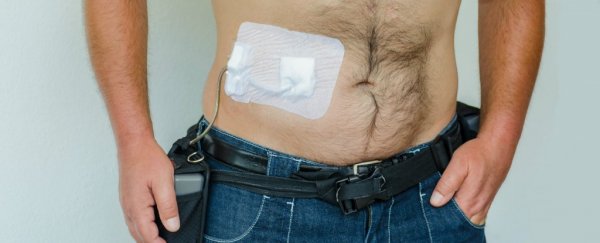If at some point in your life, you end up needing a heart pump such as a ventricular assist device (VAD), you'll notice pretty quickly that there's a cable that comes out of you and connects the pump to its control unit and battery.
But that uncomfortable situation might soon be a thing of the past, with scientists in Australia producing a wireless system to power VADs – and it could reduce chances of infection in the process.
VADs are mechanical heart support devices used when a patient's heart can't pump properly (or at all). Usually, they're used while a patient waits for a heart transplant, or recovers from heart surgery.
Although there's no doubt that these devices are lifesavers, there's a good chance they are underutilised.
"The US National Institute of Health estimates up to 100,000 people could benefit immediately from VADs," says Mahinda Vilathgamuwa, a power engineer at the Queensland University of Technology (QUT).
"However, because of the risk associated with these devices comparatively few VADs are implanted and sadly, many people have succumbed to heart disease."
The associated risk is usually down to infections, due to the cable having an entrance point into the body.
"Many deaths occur from infection because the problem with VADs is that they are powered via a cable that goes through the skin from an external battery, worn in a holster, to the VAD which is implanted in the heart," says Vilathgamuwa.
"Infection often begins at the point where the cable enters the body and is one of the most significant complications of VAD use."
Humans are absolutely covered with bacteria and other microorganisms, but our skin does a pretty good job of keeping them out. Even areas into the body such as our mouths and noses have ways of keeping out unwanted microorganisms.
However, with a hole in the skin not able to close over, bacteria that are in the environment or on the skin have a much easier time hitching a ride.
The researchers have invented a wireless power transfer system which would limit the need for a constant cable into the body.
"The system we are developing includes a lightweight copper coil that could be implanted inside the body to power the heart pump, or VAD, embedded in the body," says Vilathgamuwa.
On the outside of the body, you would have a transmitter and battery which you could wear in a jacket or holster, and on the inside, you'd have the coil receiver – no cables required.
"The system we are developing will replace the cable completely. In tests it has achieved 94 percent efficiency in powering a commercial heart pump, without the need to break the skin for a cable," said another QUT researcher, Prasad Jayathurathnage.
"We will conduct more laboratory tests and introduce a novel frequency tuning system to improve performance under dynamic operating conditions."
It's only early days yet, butwe're looking forward to seeing where this leads.
Research on the technology has been published in IEEE Transactions on Industrial Electronics.
Queensland University of Technology is a sponsor of ScienceAlert. Find out more about their research.
